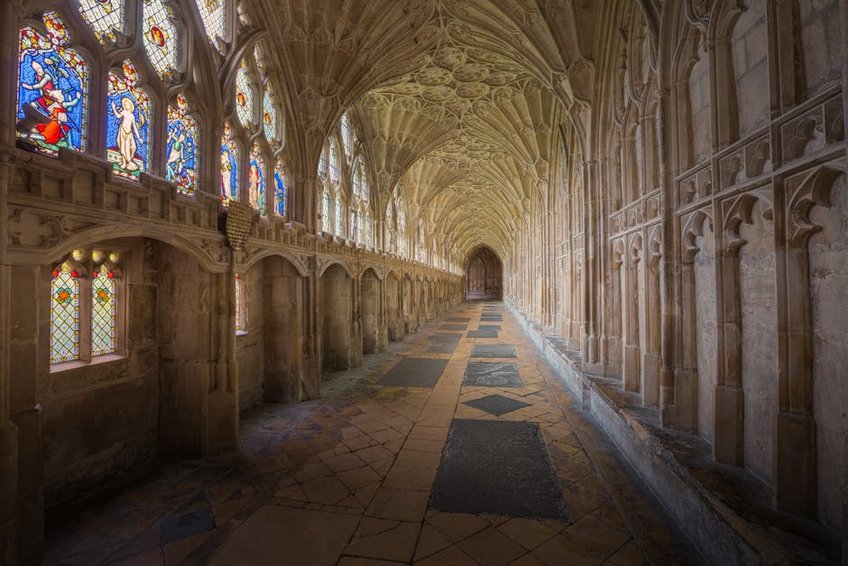Afghanistan Wakhan Corridor Trek – Remote Mountain Adventure
The Afghanistan Wakhan Corridor trek transports you through one of Earth’s most isolated mountain regions where snow-capped Pamir peaks tower above traditional Wakhi villages. This high-altitude expedition crosses ancient Silk Road routes at elevations exceeding 4,000 meters with basic infrastructure requiring thorough preparation and cultural sensitivity. Our guide covers essential planning, seasonal timing, budget considerations, and cultural protocols for this demanding Central Asian adventure.
Essential Wakhan Corridor Information
The Wakhan Corridor extends 350 kilometers between Tajikistan and Pakistan within Afghanistan’s Badakhshan Province, created as a buffer zone during the 19th Great Game. This narrow valley maintains unique cultural preservation with Wakhi and Kyrgyz nomadic communities practicing transhumance traditions largely unchanged for centuries. Trekking here requires accepting minimal facilities while experiencing extraordinary mountain hospitality.
Geographic and Historical Context
The Pamir Mountains form the corridor’s backbone with peaks reaching 6,000 meters alongside the Panj and Amu Darya rivers marking the Tajik border. British and Russian empires delineated this territory in 1893, isolating indigenous populations who maintain cross-border family connections. Modern trekking routes follow ancient caravan paths used for silk and spice trading.
- High-altitude trekking spans 4,000-5,000 meters with oxygen levels 40% lower than sea level requiring proper acclimatization protocols over several days.
- Cultural encounters involve Wakhi agro-pastoralists in lower valleys and Kyrgyz yurt-dwellers above 4,000 meters, each with distinct languages and traditions.
- Infrastructure remains basic with no ATMs, limited electricity, and communication restricted to satellite devices in most areas beyond the valley entrance.
- Budget trekking costs $1,500-2,500 for 12-14 days including permits, local guides, homestay accommodation, and meals but excluding international flights and gear rental.
- Mid-range options at $2,500-4,000 add better equipment, satellite communication, and emergency support with smaller group sizes and more cultural interactions.
- Luxury expeditions exceeding $4,000 include private transportation, dedicated cook staff, and additional acclimatization days with medical oxygen availability.
- Wakhan Corridor Tourism Association
- Lonely Planet Afghanistan Guide
Trek Difficulty and Physical Requirements
This trek demands excellent physical condition with daily ascents of 500-800 meters over rough terrain at high altitude. Participants need previous multi-day hiking experience carrying packs weighing 8-12 kilograms without porter support in most sections. River crossings, variable weather, and remote locations necessitate self-sufficiency and emergency planning.
Acclimatization requires spending 2-3 nights at intermediate elevations before attempting high passes above 4,500 meters. Temperature swings from 25°C (77°F) daytime to -5°C (23°F) overnight necessitate layered clothing systems. Trekking seasons concentrate in summer months when passes become accessible.
Cultural Significance and Preservation
Wakhi communities practice Ismaili Islam with distinctive traditions including music, embroidery, and architecture using stone and wood construction. Kyrgyz nomads maintain yurt-based pastoralism with limited interaction beyond their high pastures. Both groups preserve ancient Zoroastrian and Buddhist influences visible in petroglyphs and shrine sites.
Visitor protocols emphasize respectful engagement including dress modesty, photography permissions, and gift exchanges for hospitality. The region avoided major conflict but experienced isolation from development initiatives. Tourism provides supplementary income while challenging cultural preservation.
Planning Your Afghanistan Wakhan Corridor Trek
Organizing your Afghanistan Wakhan Corridor trek requires detailed logistics considering security protocols, seasonal accessibility, and physical preparation for high-altitude conditions. Most travelers access the region through Tajikistan with special permits processed months ahead through licensed operators. Budget allocations must cover guided services, accommodation in homestays, and emergency contingencies for this remote expedition.
The trek’s remote nature demands comprehensive insurance covering medical evacuation from high altitudes, with policies specifically including Afghanistan travel. Communication equipment should include satellite messengers since cellular coverage disappears beyond Ishkashim. Physical training should emphasize cardiovascular endurance and load carrying at simulated altitudes where possible.
Best Time to Visit the Wakhan Corridor
July through early September offers the only viable window with daytime temperatures 15-20°C (59-68°F) and night temperatures rarely dropping below freezing. High passes become snow-free during these months, though afternoon thunderstorms occur frequently requiring early morning departures. August provides the most stable conditions but sees occasional dust storms reducing visibility.
Shoulder seasons in June and late September present higher risks with pass closures possible from unexpected snowfall. Winter months from October to May make the corridor inaccessible due to heavy snow accumulation and temperatures plunging to -25°C (-13°F). Regional festivals in July offer cultural immersion opportunities but require advanced homestay reservations.
Budget Planning and Costs
Expect significant expense variations based on group size, itinerary length, and service level inclusions.
Essential Preparation Checklist
Physical preparation should begin 3 months prior with altitude training if possible, focusing on cardiovascular endurance and strength training for carrying packs. Medical preparations require consultation about altitude medication, comprehensive vaccinations, and dental checkups since no facilities exist en route. Gear must handle conditions from hot valley floors to freezing passes with reliable broken-in footwear.
Documentation needs include multiple passport copies, visa for Tajikistan/Afghanistan, trekking permits, and insurance documents with emergency contacts. Financial preparations should combine USD cash in small denominations for homestay payments and local purchases since banking facilities are unavailable. Cultural learning about local customs and basic Dari phrases enhances community interactions.

Alt: “wakhan-corridor-pamir-mountains-high-altitude-trekking”
Top Attractions and Trekking Experiences
The Wakhan Corridor delivers breathtaking landscapes from lush river valleys to stark high-altitude deserts with continuous mountain vistas. Cultural encounters provide authentic interactions with nomadic families maintaining traditional lifestyles largely unaffected by modernity. Wildlife sightings include Marco Polo sheep, ibex, and snow leopards in the most remote sections.
Must-See Highlights
Bibi Fatima hot springs offer therapeutic mineral waters at 3,800 meters near the route’s highest point, providing warmth after challenging ascents. The Great Pamir region features expansive high-altitude plains with Kyrgyz yurt camps where hospitality includes fermented mare’s milk and handmade textiles. Ancient petroglyph sites near Khandud display Bronze Age hunting scenes and Buddhist motifs.
Lake Chaqmaqtin presents stunning turquoise waters surrounded by 5,000-meter peaks, accessible via a demanding side trek from the main route. The Wakhjir Pass marks the China border at 4,923 meters with views into Xinjiang, though crossing remains prohibited. Traditional Wakhi houses in Sarhad-e Broghil feature intricate wood carvings and rooftop terraces with panoramic valley views.
Hidden Gems and Local Favorites
Qala-e Panj fortress ruins overlook the Panj River from dramatic cliffs, with remaining structures dating to the 3rd century Kushan Empire. Local shepherds often guide visitors to hidden valleys containing wild apricot orchards and natural springs unknown to most maps. Weekly livestock markets in Ishkashim create vibrant trading scenes where you can barter for handmade crafts.
Secret meditation caves used by Buddhist monks centuries ago dot cliffs above the Wakhan River, accessible with local guidance. Family-operated homestays in remote villages like Ptukh offer unparalleled hospitality with home-cooked meals and evening music sessions. Star gazing from high camps provides spectacular Milky Way visibility with minimal light pollution.
Wildlife Observation Opportunities
The corridor hosts significant populations of Marco Polo sheep with massive curved horns, best spotted early morning in the eastern sections. Snow leopard tracking requires patience and local knowledge, with occasional sightings near mountain passes at dawn. Birdwatchers can observe lammergeier vultures, Himalayan snowcocks, and various eagle species throughout the route.
Conservation efforts focus on protecting these species through community-based tourism initiatives. Visitors should maintain distance, use binoculars for observation, and avoid disturbing natural behaviors. Local guides provide the best opportunities for ethical wildlife viewing while supporting protection programs.
Practical Travel Information
Reaching the Wakhan Corridor involves complex logistics through neighboring countries with careful attention to border regulations and transportation options. Accommodation consists entirely of homestays and camping with basic amenities, requiring flexibility and cultural adaptation. Health considerations prioritize altitude sickness prevention and water purification throughout the journey.
| Category | Options/Features | Price Range (USD) |
|---|---|---|
| Homestay Accommodation | Basic rooms, shared facilities, home-cooked meals | $15-25 per night |
| Camping Equipment | Quality tents, sleeping bags, mats provided by operators | $10-20 daily rental |
| Local Transportation | 4WD vehicles, motorcycle taxis, pack animals | $50-150 per segment |
| Guide Services | English-speaking, cultural mediation, route knowledge | $30-50 daily |


